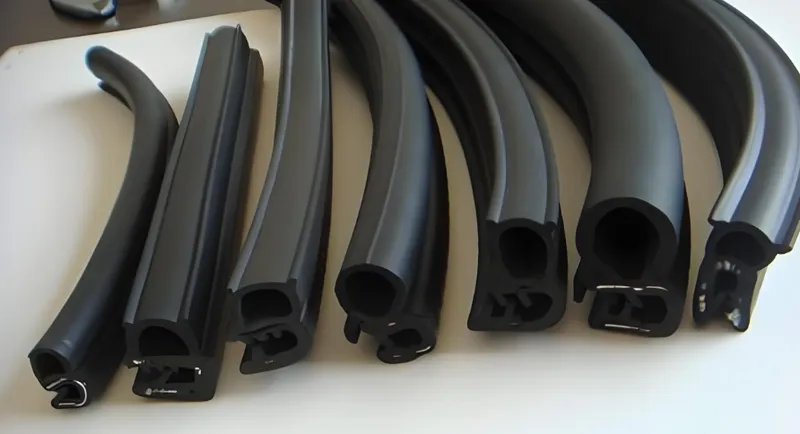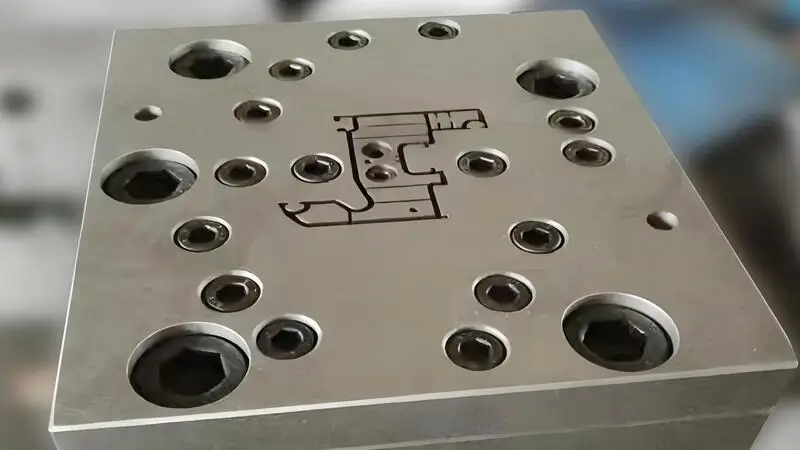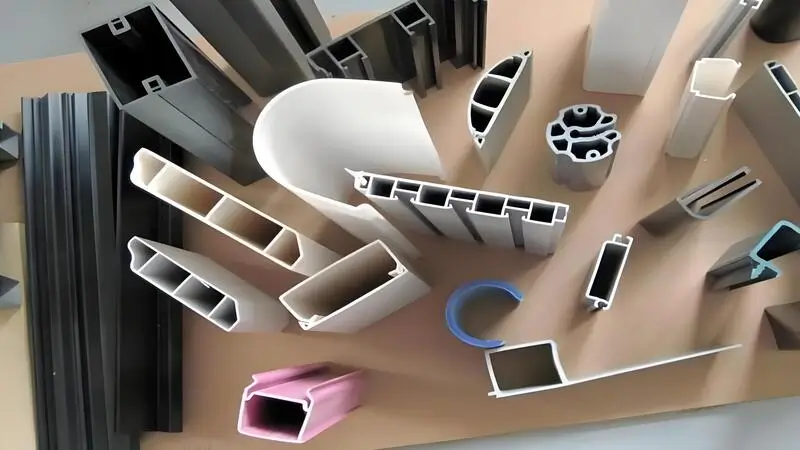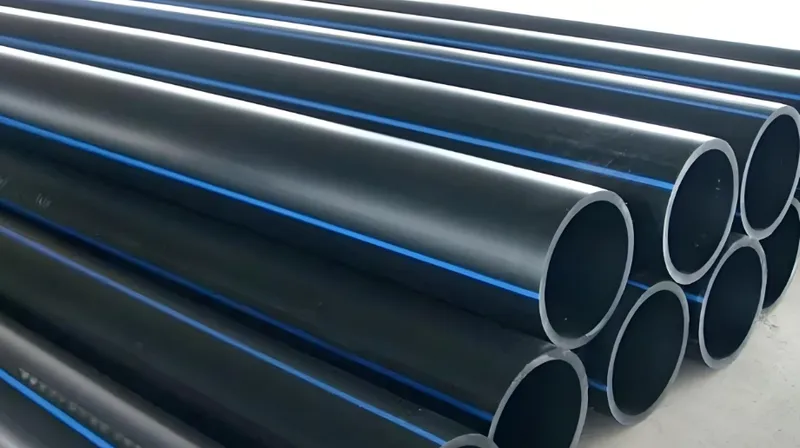Additive manufacturing1 (AM), commonly known as 3D printing, and traditional extrusion are two distinct yet complementary manufacturing processes that, when combined, can significantly enhance production capabilities across various industries. AM builds objects layer by layer from digital models, enabling rapid prototyping and the creation of complex geometries that would be challenging with traditional methods. Traditional extrusion, on the other hand, involves forcing material through a die to produce continuous shapes like pipes, profiles, or sheets, making it ideal for mass production of consistent, high-volume components.
Additive manufacturing enhances traditional extrusion2 by enabling rapid prototyping, custom production, and complex tooling, while extrusion excels in high-volume, standardized manufacturing, together optimizing efficiency and innovation.
This blog post explores how additive manufacturing complements traditional extrusion, offering insights into their synergy, technical aspects, and practical applications. By leveraging the strengths of both processes, manufacturers can achieve greater flexibility, reduce costs, and drive innovation in their production strategies.
Additive manufacturing reduces the time and cost of prototyping for extrusion processes.True
AM allows for quick and cost-effective creation of prototypes, which can be used to test and refine extrusion die designs before full-scale production.
Traditional extrusion is more efficient for large-scale production than additive manufacturing.True
Extrusion is optimized for high-volume production of consistent shapes, whereas AM is better suited for small batches and custom parts.
- 1. What is Additive Manufacturing?
- 2. What is Traditional Extrusion?
- 3. How Does Additive Manufacturing Complement Traditional Extrusion?
- 4. Applications of Additive Manufacturing in Extrusion
- 5. Technical Aspects: Process Workflows and Material Compatibility
- 6. Practical Tools: Design Checklists and Decision Frameworks
- 7. Comparison of AM and Traditional Extrusion
- 8. Conclusion
What is Additive Manufacturing?
Additive manufacturing (AM), often referred to as 3D printing, is a transformative technology that creates objects by adding material layer by layer based on a digital model. Unlike traditional subtractive methods that carve away material, AM builds parts from the ground up, offering unparalleled design flexibility. According to Wohlers Associates, AM includes processes like material extrusion, vat photopolymerization, and powder bed fusion, each suited to specific materials such as polymers (e.g., ABS, PLA), metals (e.g., titanium, aluminum), and ceramics.

AM shines in rapid prototyping3, allowing designers to iterate quickly, and in producing customized or small-batch parts, such as medical implants or aerospace components. However, its slower speed and higher per-part costs make it less ideal for large-scale production compared to traditional extrusion.
What is Traditional Extrusion?
Traditional extrusion is a manufacturing process where material—often a thermoplastic, metal, or ceramic—is heated and forced through a die to create objects with a fixed cross-sectional profile. This continuous process excels at producing long, uniform shapes like pipes, wires, and profiles, serving industries such as construction, automotive, and packaging Britannica.

The workflow includes material preparation, heating, extrusion through a die, cooling, and cutting. Extrusion’s efficiency in handling large volumes with minimal waste makes it a go-to for mass production, though it’s limited to consistent cross-sections and requires significant investment in die design.
How Does Additive Manufacturing Complement Traditional Extrusion?
Additive manufacturing enhances traditional extrusion by addressing its limitations and expanding its capabilities in several ways:

Rapid Prototyping of Extrusion Dies
AM enables the rapid, cost-effective production of prototype dies for extrusion processes4. Manufacturers can test and refine die designs—such as those with complex cooling channels—before investing in traditional die manufacturing. Metal AM techniques like selective laser melting (SLM) are particularly effective for this AddUp Solutions.

Custom and Small-Batch Production
While extrusion dominates mass production, AM excels at producing custom or low-volume parts that integrate with extruded components. In aerospace, AM creates intricate, lightweight parts combined with extruded structural elements, optimizing performance and reducing weight.
Hybrid Manufacturing
Some products leverage both processes: AM for complex sections and extrusion for standard, high-volume components. In automotive applications, AM produces custom fixtures for extrusion lines, enhancing efficiency MIT Sloan.
Tooling and Fixtures
AM is increasingly used to create custom tooling5, jigs, and fixtures for extrusion processes. These tailored tools reduce setup times and improve efficiency, often produced cost-effectively with consumer-grade AM systems Additive Manufacturing Media.
AM can produce complex dies that enhance extrusion efficiency.True
AM allows for the creation of dies with intricate features like conformal cooling channels, improving die performance and reducing production time.
AM completely replaces traditional extrusion in modern manufacturing.False
AM complements rather than replaces extrusion, as extrusion remains superior for high-volume, standardized production.
Applications of Additive Manufacturing in Extrusion
The synergy between AM and extrusion is evident across industries:

-
Aerospace: AM produces lightweight lattice structures or brackets that pair with extruded aluminum profiles, enhancing fuel efficiency ScienceDirect.
-
Automotive: AM creates prototype parts and custom fixtures for extrusion6 lines, streamlining production of trim pieces or beams.
-
Construction: AM crafts custom molds used with extruded PVC pipes or aluminum frames, blending flexibility with cost-effectiveness.
-
Medical Devices: AM fabricates patient-specific implants incorporating extruded tubing, combining customization with durability.
These examples highlight how AM enhances extrusion, enabling innovative, efficient manufacturing solutions.
Technical Aspects: Process Workflows and Material Compatibility
Understanding the workflows and material compatibility of both processes is key to their integration.

Additive Manufacturing Workflow (e.g., FDM)
-
Design: Create a 3D model in CAD, optimized for layer-by-layer building.
-
Slicing: Convert the model into layers, setting parameters like layer height and supports.
-
Printing: Deposit material via a nozzle, building the part layer by layer.
-
Post-processing: Remove supports and refine surfaces as needed.
Traditional Extrusion Workflow
- Die Design: Craft a die (e.g., aluminum for plastics, steel for metals) for material flow.

-
Material Prep: Heat and mix material to the right viscosity.
-
Extrusion: Force material through the die under pressure (30-700 MPa).
-
Cooling/Cutting: Cool the extrudate and cut to length.
Material Compatibility
| Process | Common Materials | Notes |
|---|---|---|
| AM (e.g., FDM) | ABS, PLA, PETG, titanium, aluminum | Varies by process; polymers and metals |
| Traditional Extrusion | PVC, polyethylene, aluminum, copper | Handles thermoplastics, metals, ceramics |
Aligning workflows and materials ensures seamless integration of AM and extrusion.
Practical Tools: Design Checklists and Decision Frameworks
Manufacturers can use these tools to optimize their use of AM and extrusion:

Design Checklist for AM
-
Ensure designs suit layer-by-layer building (e.g., overhangs <45°).
-
Plan for support structures and post-processing needs.
-
Verify material compatibility7 and account for shrinkage.
Design Checklist for Extrusion
-
Design uniform cross-sections for smooth material flow.
-
Incorporate die cooling channels to prevent defects.
-
Plan for post-extrusion finishing if needed.
Decision-Making Framework
| Question | AM Preference | Extrusion Preference |
|---|---|---|
| Volume? | Low (<1000 units) | High (>1000 units) |
| Complexity? | Complex geometries | Consistent cross-sections |
| Speed? | Rapid prototyping | High-speed production |
This framework guides process selection based on volume, complexity, and time constraints.
Comparison of AM and Traditional Extrusion
| Aspect | Additive Manufacturing (AM) | Traditional Extrusion |
|---|---|---|
| Pros | - Design flexibility - Fast prototyping | - High production rates - Cost-effective for mass production |
| Cons | - Slower for large batches - Higher cost/unit | - Limited to uniform shapes - High die costs |
Conclusion
Additive manufacturing and traditional extrusion together form a powerful manufacturing duo. AM’s strengths in prototyping, customization, and complexity complement extrusion’s efficiency in high-volume, standardized production. From aerospace to automotive, their combined use drives innovation, reduces costs, and optimizes workflows. As these technologies evolve, their synergy will continue to shape the future of manufacturing.
-
Explore how Additive manufacturing revolutionizes production processes and enhances efficiency across industries. ↩
-
Learn about traditional extrusion's role in mass production and its advantages in creating consistent shapes. ↩
-
Discover the significance of rapid prototyping in modern manufacturing and its impact on design and production. ↩
-
Learn about the intricacies of extrusion processes and their applications in various industries. ↩
-
Discover the importance of custom tooling in enhancing manufacturing efficiency and reducing costs. ↩
-
Learn about the extrusion process and its applications in creating various materials, crucial for understanding its synergy with AM. ↩
-
Understanding material compatibility is essential for optimizing production methods and ensuring quality in manufacturing. ↩









